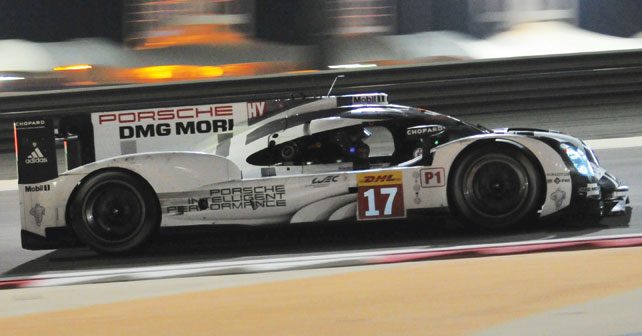Great teamwork led to a long overdue, and much deserved world championship for Mark Webber, and a treble for Porsche in the solitude of the Bahraini desert.
Porsche Motorsport and Mark Webber’s achievement is by no means a trivial one. In their second season back to the top level of sportscar racing, they won the 24 Hours of Le Mans, beat Toyota and Audi to the LMP1 constructors’ crown and along with Timo Bernhard and Brendon Hartley – Mark Webber’s fellow drivers of the #17 919 Hybrid – won the drivers’ championship too.
For the Australian in particular, it was vindication of a talent that shone bright in Formula 1, but was not rewarded with championship glory for reasons motorsport fans and insiders can speculate on till eternity. For Porsche, wrapping up the title despite the #17 squad struggling in the FIA World Endurance Championship finale in Bahrain was sweet as the #18 car driven by Neel Jani, Romain Dumas and Marc Lieb beat the #7 Audi R18 e-tron Quattro driven by Andre Lotterer, Marcel Fassler and Benoit Treluyer. The win was crucial as it denied Audi from stealing the LMP1 drivers’ crown from Porsche by just five points. Practically nothing when you consider the difference between first and second place is seven points and 25 points on offer for the winner.
A GAME OF ENERGY
The name of the game throughout the season turned out to be energy recovery and deployment, something that paired with aerodynamics and chassis performance helped Porsche score a 1-2 at Le Mans and win the remaining five races of the year.
“We gotta get to eight megajoules,” Lotterer told autoX. “That’s the goal if we are going to get anywhere near Porsche in 2016 and our car will change in order to reach it.”
The former LMP1 driver’s champion, Le Mans winner and Formula Nippon and Super GT champion said this before Audi revealed it’s car for this year’s campaign. So far they have managed to move up from 4MJ of storage to 6MJ.
Development like this by manufacturers in LMP1 seems to be done increasingly with an open cheque-book. Something that also occurred to last year’s driver’s champion – along with Kazuki Nakajima and Sebastien Buemi – Anthony Davidson, who bid farewell to the Toyota TS040 Hybrid.
“It’s kind of strange really, one year we were leading from the front and winning both titles and now all of a sudden we are nowhere!” said Davidson. “It is turning into a bit of a spending war between the manufacturers to be honest. All three companies have massive budgets and don’t really need to depend on sponsors.
“But I’m sure eventually the regulations will change in order to curb that spending. These cycles always happen in motorsport.”
The fact that this doesn’t get in the way of good racing is a testament to the format of the WEC that allows for a mistake or reliability issue early in the race to not be the deciding factor over six hours. Webber and the #17 squad’s victory was a testament to that.
HOW IT PLAYED OUT
After getting away cleanly at the start and opening up a lead to the chasing Audis and the #18 Porsche, Webber had to pull into the pits within just 30 minutes after the 919 Hybrid’s engine actuator started to malfunction, causing a big loss in power. The unscheduled stop was one of two – relating to the same problem – throughout the race that meant that the #17 car could only finish fifth.
However, help was forthcoming in the form of the #18 car, which took overall honours after a fierce battle with the #7 Audi of Andre Lotterer, Marcel Fassler and Benoit Treluyer, who needed to win the race in order to take the drivers’ championship. Full course yellows wiped out an advantage that the #7 car had in the lead at one point.
A pit stop penalty for the #8 Audi meant that Toyota scored their first podium of the season since the opening round of the 2015 WEC season in Silverstone. The #2 car driven by ex-F1 driver Alexander Wurz, Mike Conway and Stephane Sarrazin took third in Wurz’s final outing in competitive motorsport.
A CONTEST IN SOLITUDE
Probably the only downside to witnessing this in person - thanks to Porsche India - was the fact that the contest was played out to near empty stands. The country’s richness in natural resources doesn’t seem to have spawned a similar richness in motorsport culture.
Walking around the circuit’s service roads from early morning till the night revealed the same scene of sparse, to absent attendance despite support races by GP2, GP3, MRF Challenge and a regional Porsche GT championship. A sobering reality in the recently started debate of F1 vs WEC, a topic unto itself entirely!


























Write your Comment